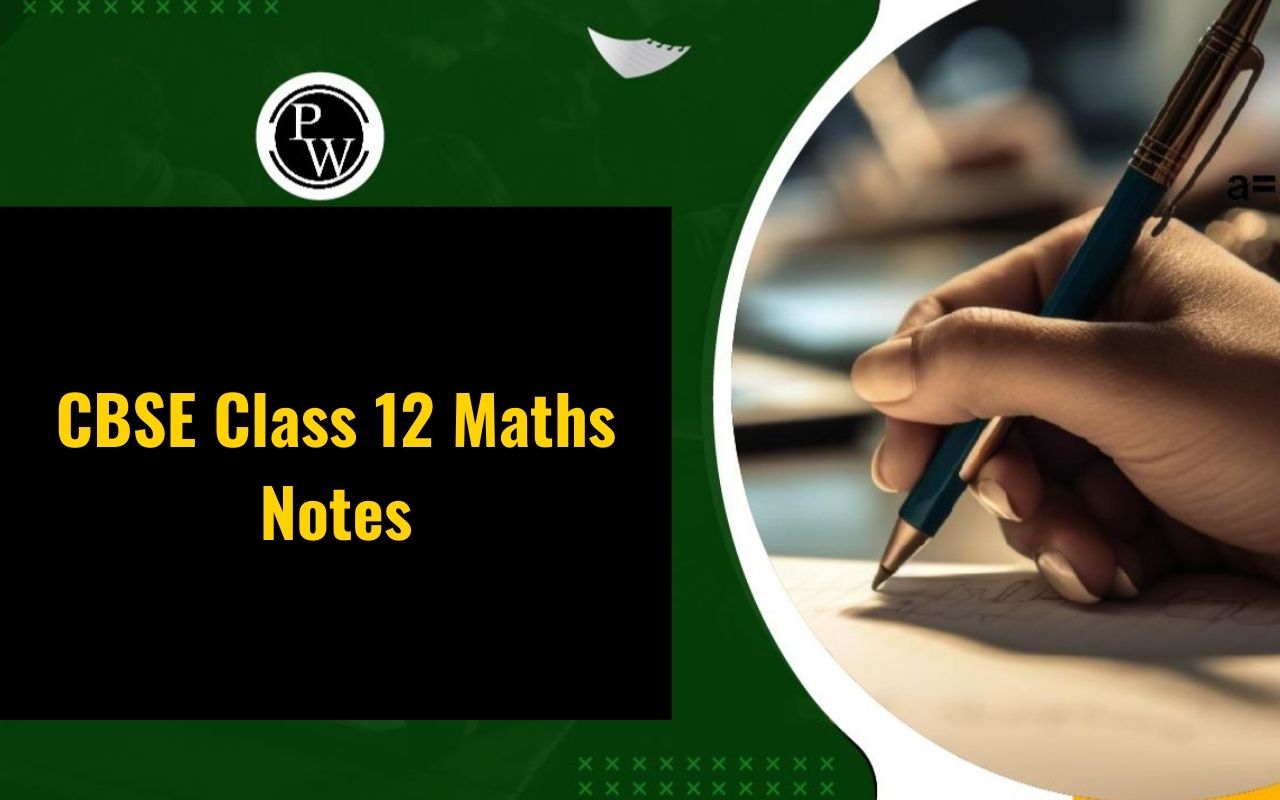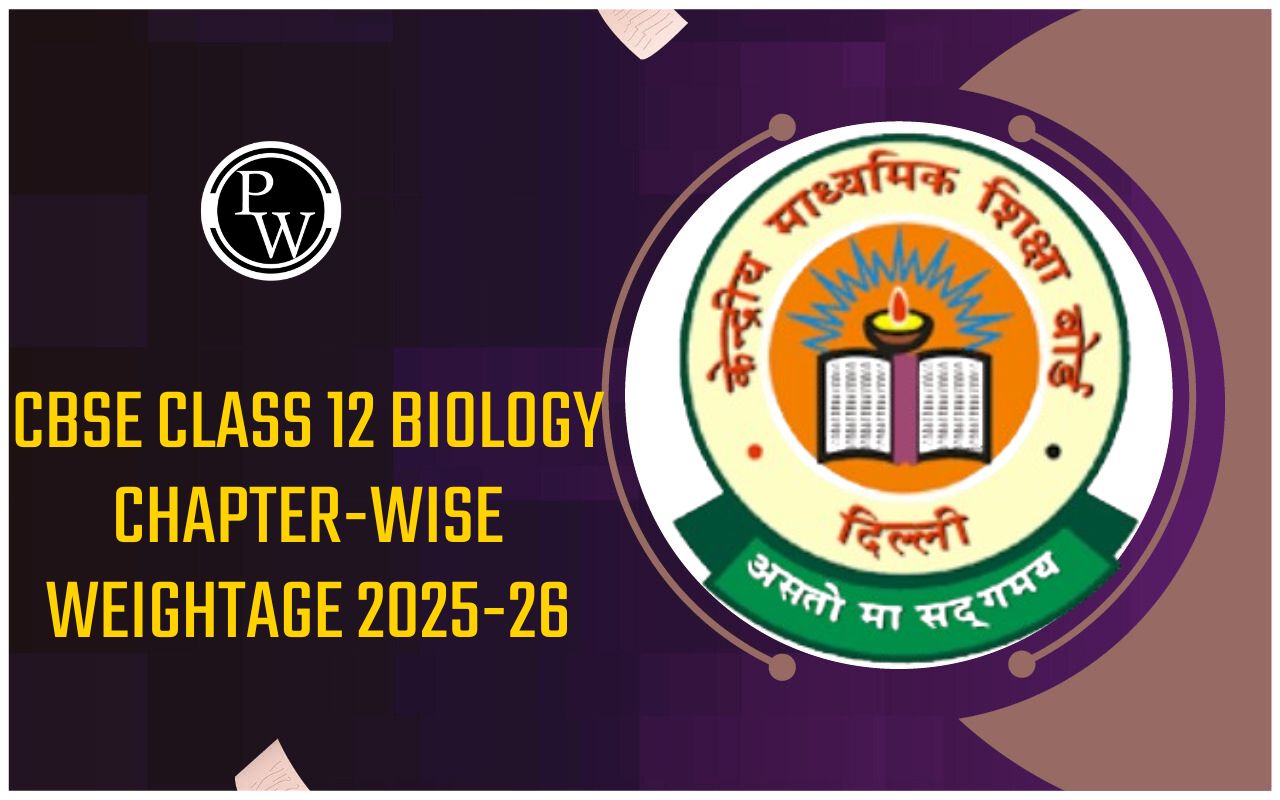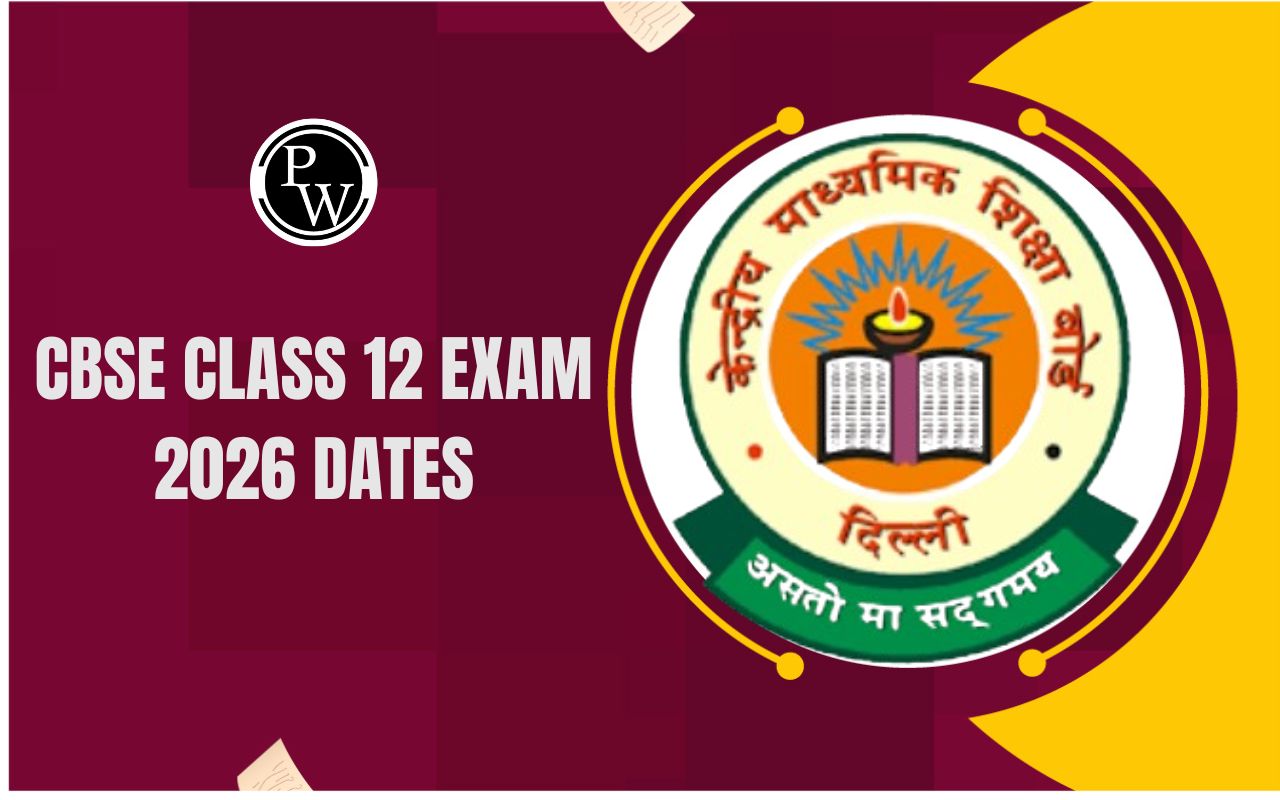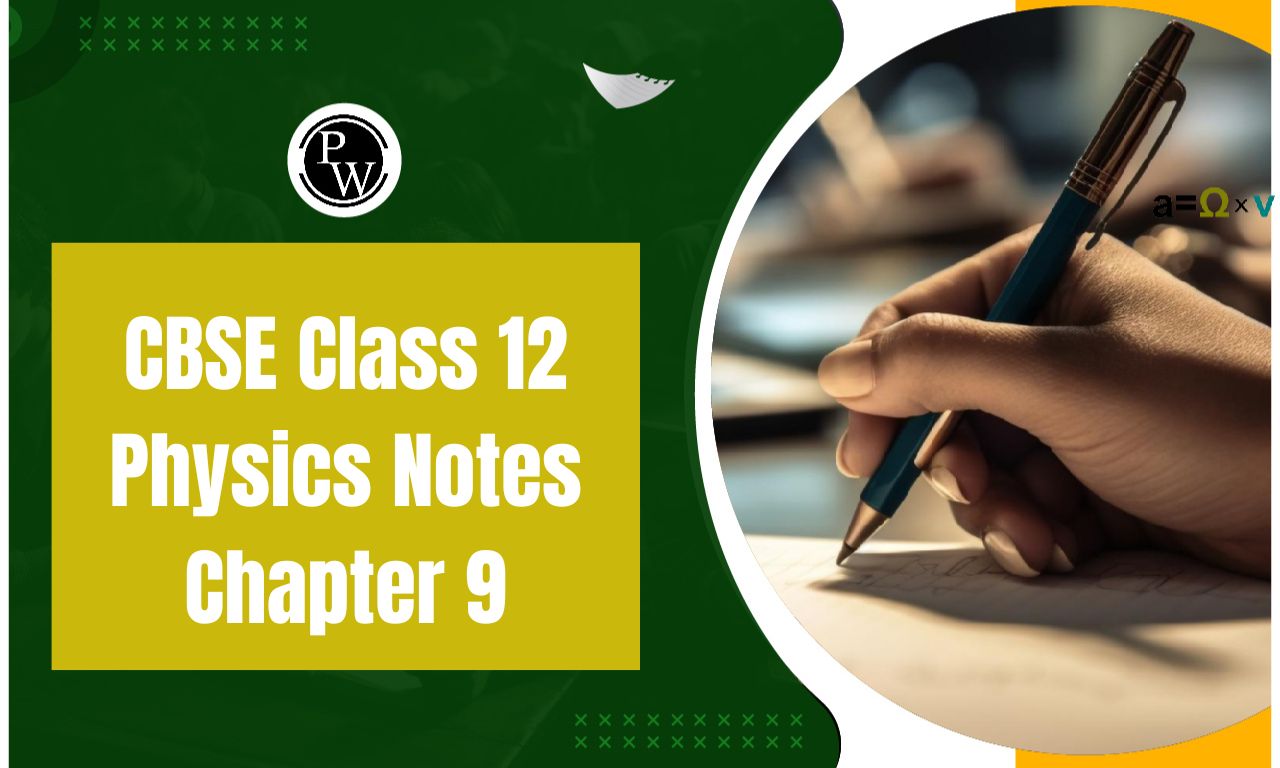

CBSE Class 12 Maths Notes: CBSE Class 12 Maths Notes provide a detailed overview of important topics covered in the curriculum. These notes provide detailed explanations on important chapters such as Relations and Functions, Matrice, Integrals, and Vector.
The notes are designed to assist in effective exam preparation and facilitate quick revisions making them an invaluable resource for mastering Class 12 Maths concepts. By breaking down complex topics into manageable sections and including illustrative examples and solutions, these notes help students build a strong foundation and approach their exams with confidence.CBSE Class 12 Maths Notes Chapter Wise PDF
Below are the chapter-wise notes for CBSE Class 12 Maths:CBSE Class 12 Maths Notes Topic Wise Summary
Here is a topic-wise summary of the CBSE Class 12 Maths notes:CBSE Class 12 Maths Notes Chapter 1: Functions and Relations
This chapter focuses on the fundamental concepts of relations and functions. It covers different types of relations such as reflexive, symmetric, transitive, and equivalence relations. Functions are discussed in terms of one-to-one, onto, and bijective functions, with detailed explanations of their properties. Composite functions and inverse functions are also introduced, along with their domains, ranges, and graphs.CBSE Class 12 Maths Notes Chapter 2: Inverse Trigonometric Functions
This chapter explain the inverse of trigonometric functions. It explores how to find the inverse of sine, cosine, tangent, and other trigonometric functions. The principal value branches of these inverse functions are defined, along with their domains and ranges. The chapter also includes properties and identities related to inverse trigonometric functions and the simplification of complex trigonometric equations.CBSE Class 12 Maths Notes Chapter 3: Matrices
Matrices are an important tool in algebra and have numerous applications in real-life problems. This chapter covers the definition and types of matrices (e.g., row, column, square, diagonal, identity, and zero matrices). Matrix operations, including addition, subtraction, and multiplication, are explained in detail, along with properties like commutativity, associativity, and distributivity. Special matrices like transpose, symmetric, and skew-symmetric matrices are discussed. The chapter also covers matrix inversion and its applications in solving systems of linear equations.CBSE Class 12 Maths Notes Chapter 4: Determinants
Determinants are closely related to matrices and provide useful tools in solving linear equations and other algebraic problems. This chapter explains how to calculate the determinant of square matrices of different orders, focusing on properties such as linearity, row operations, and cofactor expansion. It also covers the application of determinants in solving linear equations using Cramer’s rule, finding the area of triangles, and determining the consistency of systems of equations.CBSE Class 12 Maths Notes Chapter 5: Continuity and Differentiability
Continuity and differentiability are core concepts in calculus. The chapter explains what it means for a function to be continuous and differentiable at a point or over an interval. It discusses algebraic operations on continuous and differentiable functions, higher-order derivatives, and the chain rule for differentiating composite functions. The chapter introduces important theorems like Rolle’s Theorem and the Mean Value Theorem and explains their geometric significance.CBSE Class 12 Maths Notes Chapter 6: Application of Derivatives
This chapter explores the practical applications of derivatives in various fields. It explains how derivatives are used to find the slope of tangents and normals to curves, determine the intervals where a function is increasing or decreasing, and locate local maxima and minima. Derivatives are also applied to solve problems involving rates of change in physics and economics.CBSE Class 12 Maths Notes Chapter 7: Integrals
Integral calculus forms the backbone of this chapter, starting with indefinite integrals, which are the reverse process of differentiation. The chapter explores different techniques of integration, such as substitution, partial fractions, and integration by parts. It also introduces definite integrals and their properties, including the Fundamental Theorem of Calculus, which links differentiation and integration. Various examples demonstrate how to apply these techniques to solve problems.CBSE Class 12 Maths Notes CBSE Class 12 Maths Notes Chapter 8: Application of Integrals
This chapter focuses on real-life applications of integrals, particularly in finding areas. It covers how to calculate the area under a curve and the area between two curves using definite integrals. The concepts are applied to practical problems, such as finding the areas of geometric shapes and regions enclosed by given curves.CBSE Class 12 Maths Notes Chapter 9: Differential Equations
This chapter introduces the formulation and solutions of differential equations. It explains how to form differential equations from given functions and their derivatives, and how to determine the order and degree of a differential equation. The chapter covers several methods for solving first-order and first-degree differential equations, including separation of variables, homogeneous differential equations, and linear differential equations. Practical applications of differential equations in physics and engineering are also highlighted.CBSE Class 12 Maths Notes Chapter 10: Vector Algebra
Vector Algebra is crucial for understanding spatial relationships and solving problems in geometry and physics. This chapter covers the basics of vectors, their magnitude, and direction, and the various types of vectors (unit, null, and equal vectors). Operations such as addition, subtraction, scalar multiplication, and the dot and cross product of vectors are thoroughly explained. The chapter also covers the application of vectors in geometry, particularly in finding the angle between vectors and areas of parallelograms and triangles.CBSE Class 12 Maths Notes Chapter 12: Linear Programming
Linear Programming is used to solve optimization problems where the goal is to maximize or minimize a linear objective function subject to constraints. This chapter introduces the basic concepts of linear programming, such as feasible and infeasible regions, constraints, and objective functions. It focuses on graphical methods for solving linear programming problems (LPPs) and explains how to identify the optimal solution.CBSE Class 12 Maths Notes Chapter 13: Probability
This chapter introduces the theory of probability, starting with basic concepts such as sample space, events, and probability axioms. Conditional probability and independent events are explored in detail, along with Bayes’ Theorem and its applications. The chapter also introduces random variables and their probability distributions, focusing on the binomial distribution. Several examples illustrate how to apply probability theory to real-life problems, including risk assessment and decision-making under uncertainty.Benefits of CBSE Class 12 Maths Notes
Clear and Concise Summary: The notes provide a clear and detailed summary of each chapter, helping students quickly revise important topics and formulas without going through the entire textbook. This saves time and enhances retention.
Step-by-Step Solutions: Many topics in Class 12 Maths involve complex problem-solving. The notes break down these problems into step-by-step solutions making it easier for students to understand the methodology and approach required to solve different types of questions.
Focus on Important Concepts: The notes highlight key concepts and formulas that are frequently asked in exams. This helps students focus on what is most important and improves their exam preparedness.
Structured Format: The notes are organized in a structured and systematic manner making it easier for students to navigate through different chapters and topics. This format also helps in maintaining continuity in learning and revision.
Time-Saving: Students can save a significant amount of time by using these notes as they provide quick access to important points, derivations and formulas. Instead of sifting through lengthy chapters, students can review the essential information efficiently.
Boosts Confidence: Well-prepared notes give students confidence by providing a thorough review of each topic. Knowing they have covered all important areas allows students to approach their exams with greater assurance.
Helps in Practice and Revision: The notes act as a detailed revision guide, allowing students to practice various types of problems and revisit difficult concepts. Regular revision using these notes strengthens their problem-solving abilities.
Suitable for Quick Revision Before Exams: During the final days leading up to the exams these notes are an excellent resource for a quick and detailed revision. Students can go through the key concepts, formulas and important theorems in a short span of time.
CBSE Class 12 Maths Notes FAQs
Are the Class 12 Maths Notes enough for exam preparation?
Can the notes help me with difficult topics like Integrals and Differential Equations?
How do these notes help with quick revision?
Are CBSE Class 12 Maths notes aligned with the latest CBSE syllabus?
Can I rely solely on these notes to score well in board exams?












